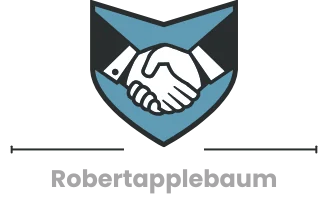Nurse education today is a bit like a rollercoaster ride, exciting, occasionally daunting, yet eventually rewarding for everyone involved. Imagine stepping into a classroom where the latest technology meets centuries of tradition. You’ve got future nurses ready to leap into a field that is as demanding as it is fulfilling, armed not just with their scrubs but also with cutting-edge knowledge and skills. Buckle up as we explore the evolution of nurse education, the role of technology, the hurdles it faces, and where it’s headed in the future.
Table of Contents
ToggleThe Evolution of Nurse Education

Historical Context of Nurse Training
Nurse education hasn’t always looked like it does today. Back in the early days, training often happened on the job, with aspiring nurses learning from those more experienced in the field. The iconic Nightingale training schools of the 19th century marked a shift towards a more structured approach, but even then, the focus was primarily on bedside care. As societies evolved and medical practices advanced, so too did the training methodologies.
Changes in Educational Standards and Requirements
Fast forward to today, where educational standards are sharper than a scalpel. Most aspiring nurses now need to earn at least an associate degree in nursing (ADN) or a bachelor of science in nursing (BSN). Nations like the United States are advocating for a higher standard, with many hospitals and organizations requiring a BSN as a minimum qualification. This shift reflects a growing understanding of the diverse skill set nurses need, including critical thinking, communication, and leadership abilities.
The Role of Technology in Nurse Education
Simulation and Virtual Learning Environments
The role of technology in nurse education is absolutely transformative. Gone are the days when training involved only textbooks and lectures. Today’s nursing students can enter simulation labs that mimic real-life medical scenarios, allowing them to practice without the fear of harming patients. These advanced simulations provide experiences that prepare them for actual medical situations. Imagine treating a virtual patient while being told, ‘Oops. That’s the wrong medication.’ What a learning opportunity.
Online Learning Platforms and Resources
Also, online learning platforms are changing the game. Students can access materials from anywhere, at any time, breaking the constraints of traditional venues. This flexibility not only accommodates busy schedules but also ensures that students can revisit complex topics as often as needed. Nursing education is riding the digital wave to ensure that upcoming professionals are well-prepared for the challenges ahead.
Challenges Facing Nurse Education
Addressing the Nursing Shortage
Even though the progress, challenges remain. One glaring issue is the nursing shortage. Estimates suggest that the United States alone could face a shortage of over a million nurses by 2029. This situation puts enormous pressure on nursing programs to produce qualified graduates rapidly. As demand outstrips supply, institutions must act swiftly to ensure they can meet the healthcare needs of their communities.
Maintaining Program Accreditation and Quality
Another obstacle is maintaining program accreditation and ensuring that education remains of high quality. Accreditation is essential for nursing programs as it assures students and employers of the program’s credibility. With varying standards across different institutions, keeping up with quality measures is no small feat, a challenge that requires ongoing commitment from educational leadership.
Future Trends in Nurse Education
Interprofessional Education and Collaboration
Looking ahead, interprofessional education (IPE) is gaining traction. Nurses will increasingly work alongside pharmacists, physicians, and other healthcare professionals in learning environments. This approach not only fosters teamwork but also prepares future nurses for the collaborative nature of modern healthcare. Imagine a classroom where future nurses and doctors learn problem-solving together: the benefits to patient care are monumental.
Emphasis on Lifelong Learning and Professional Development
Also, with rapid advancements in healthcare, the emphasis on lifelong learning and professional development will only increase. Nurses will need to continuously update their skills and knowledge to stay current in a fast-paced environment. Continuing education courses are becoming not only encouraged but necessary, ensuring that today’s training produces capable, adaptable, and innovative healthcare professionals.



